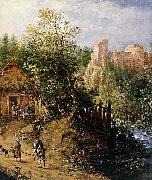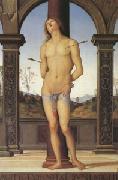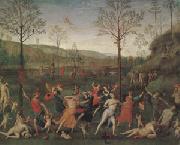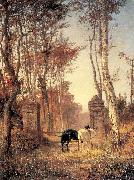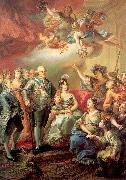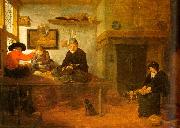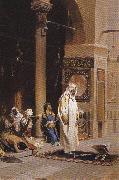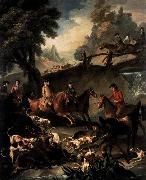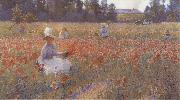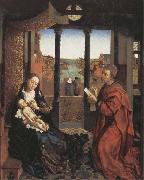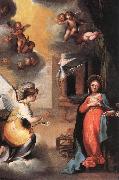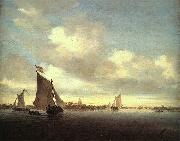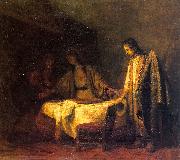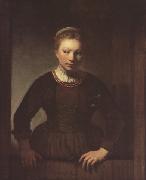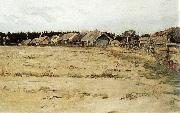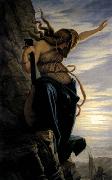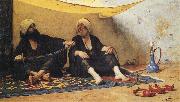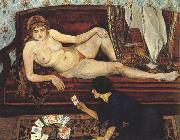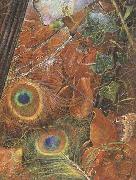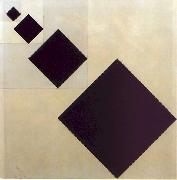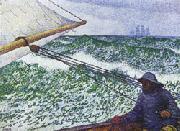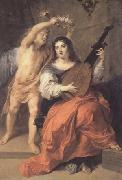|
|
|
|
|
|
|
|
 |
Pietro della Vecchia
|
|
(1603 - 8 September 1678) was an Italian painter also known as Pietro Muttoni. Born in Vicenza (Venice), he likely trained with Alessandro Varotari, called Padovanino, deriving a notable interest in Venetian masters such as Titian and Giorgione. Until 1984, he was mistakenly referred to as Pietro Muttoni. This misnomer is attributed to Italian art historian and archaeologist, Luigi Lanzi (June 14, 1732 - 30 March 1810), who in his Storia pittorica della Italia confused the name of the artist with the name of a collection, Muttoni, in which he had seen one of his paintings. In fact, Pietro was from the well known Venetian family, the della Vecchia. Renowned among his contemporaries for his ability to imitate the styles of 16th-century masters, he was also known for his grotesque paintings and portraiture. His earliest known works, two representations of St Francis, which have survived in many versions (e.g. Modena, Gal. Estense; Rovigo, Accad. Concordi), and a Crucifixion (1633; Venice, S Lio) are so heavily influenced by Carlo Saraceni and his student and collaborator Jean Leclerc as to suggest that della Vecchia trained with them. Certain Caravaggesque elements, which remained in his work for some time to come, suggest that he spent some time in Rome after Leclerc had left Venice, in 1621 or 1622. The influence of Alessandro Varotari or Padovanino, who is described by sources (e.g. Orlandini) as della Vecchia's teacher, is only noticeable in dated works from 1635 onwards. Della Vecchia probably worked in Padovanino's studio c. 1625-6, after his trip to Rome, and from the latter he derived his great interest in 16th-century painting in Venice and the Veneto. His monumental Crucifixion (1637; Venice, Fond. Cini), in which the composition harks back to the 16th century while the figures derive from Caravaggio, is characteristic of this phase. Around 1640 the influence of Bernardo Strozzi is apparent in his work, as in the Angel Offering a Skull to St Giustina, who stands between St Joseph and St John (1640; Venice, Accad.), painted for the church of S Giustina. In 1640 he began to design cartoons for the mosaics in S Marco, on which he worked until 1673. From 1640 to 1673 he was commissioned from the Venetian Republic for the design of the mosaic cartoons for the St. Mark's Basilica. He painted four idyllic landscapes that presage some of the Rococo content (now in Pinacoteca Querini-Stampalia). He married Clorinda Renieri, daughter of Nicolas Regnier, Flemish painter and art dealer. Della Vecchia died in Venice, September 1678.
|
|
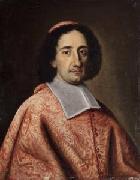 |
Pietro Paolo Vegli
|
|
Pietro Paolo Vegli - Ritratto Del Cardinale Francesco Maidalchini (1621 - 1700)
|
|
|
|
|
|
|
|
|
|
 |
queen victoria
|
|
Born: 24 May 1819
Birthplace: London, England
Died: 22 January 1901 (cerebral hemorrhage)
Best Known As: The queen who reigned for 64 years |
|
|
|
 |
R. v. Bohnlich
|
|
R v Bohnlich (fl.c.1880)
19th Century Paintings and Watercolours
|
|
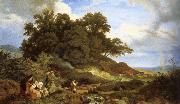 |
ralph vaughan willams
|
|
Period: Romantic (1820-1869)
Country: Germany
Born: February 03, 1809 in Hamburg, Germany
Died: November 04, 1847 in Leipzig, Germany |
|
|
|
|
|
|
|
|
|
|
|
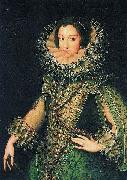 |
Rodrigo de Villandrando
|
|
Rodrigo de Villandrando (1588 - December 1623) was a court painter during the reign of Philip III of Spain. He worked in the tradition of Alonso Senchez Coello and Juan Pantoja de la Cruz. His death opened the road to court for the young painter Diego Velezquez from Sevilla. |
|
|
|
 |
Rogier van der Weyden
|
|
Rogier van der Weyden 1399/1400 - 1464 was the most important representative of Netherlandish painting or Northern Renaissance
|
|
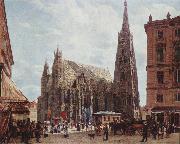 |
Rudolf von Alt
|
|
(28 August 1812 in Vienna C 12 March 1905 in Vienna) was an Austrian landscape and architectural painter. Borne as Rudolf Alt, he could call himself von Alt and bear the title of a Ritter (knight) after he gained nobility in 1882.
He was the son of the famous lithographer Jakob Alt (1789-1872). He studied at the Akademie der bildenden K??nste in Vienna. Hiking-trips through the Austrian Alps and northern Italy awoke a love for landscapes, and he painted with his brush using watercolors in a very realistic and detailed style. In 1833, inspired by a visit to Venice and neighbouring cities, he also made a number of architectural paintings.
Alt demonstrated a remarkable talent for expressing certain peculiarities in nature. He managed to paint nature authentically by focusing on the different hues of sky, the colour-tone of the air and the vegetation. His later works came closer to Impressionism. His perspectives on architecture were interesting, and he often chose everyday objects to paint. The painting of interior-views also became one of his strong points, giving him attention in Vienna. |
|
 |
rudolph von alt
|
|
Rudolf Ritter von Alt (28 August 1812 in Vienna ?C 12 March 1905 in Vienna) was an Austrian landscape and architectural painter. Borne as Rudolf Alt, he could call himself von Alt and bear the title of a Ritter (knight) after he gained nobility in 1882.
He was the son of the famous lithographer Jakob Alt (1789-1872). He studied at the Akademie der bildenden K??nste in Vienna. Hiking-trips through the Austrian Alps and northern Italy awoke a love for landscapes, and he painted with his brush using watercolors in a very realistic and detailed style. In 1833, inspired by a visit to Venice and neighbouring cities, he also made a number of architectural paintings.
Alt demonstrated a remarkable talent for expressing certain peculiarities in nature. He managed to paint nature authentically by focusing on the different hues of sky, the colour-tone of the air and the vegetation. His later works came closer to Impressionism. His perspectives on architecture were interesting, and he often chose everyday objects to paint. The painting of interior-views also became one of his strong points, giving him attention in Vienna.
He visited and worked for a while in Rome and Naples; after that he visited the lakes of Lombardy, then Galicia, Bohemia, Dalmatia, Bavaria and then returned multiple times to Italy. In 1863 he went to the Crimea to paint some views of an estate of the Empress, and in 1867 he went to Sicily.
His younger brother Franz Alt, (b. 1821 in Vienna) was also a painter.
Most of his paintings are held by various museums in Vienna. The Albertina in Vienna hosted a retrospective exhibition from September 2005 to January 2006.
|
|
|
|
|
|
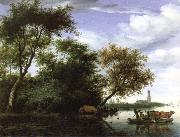 |
Salomon van Ruysdael
|
|
Salomon van Ruysdael (c. 1602, Naarden - buried Nov 3, 1670, Haarlem) was a Dutch landscape painter. He was the uncle of Jacob van Ruisdael. |
|
|
|
|
|
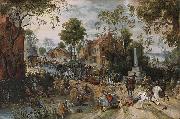 |
Sebastiaen Vrancx
|
|
(22 January 1573 - 19 May 1647) was a Flemish Baroque painter and etcher of the Antwerp school.
He was an apprentice in the workshop of Adam van Noort, who also trained many illustrious painters such as Peter Paul Rubens, Jacob Jordaens and Hendrik van Balen. He also visited the workshop of the Antwerp painter Paul Bril in Rome around 1600.
He was esteemed as one of the main painters of battle scenes, and works by Vranckx were in the collection of Peter Paul Rubens. As a collaborator he worked at times with Jan Brueghel the Elder. and together with Rubens, Frans Francken the Younger, van Balen, Frans Snyders and Joos de Momper the Younger on the Allegory of the Senses, two works commissioned on the occasion of the archduke Albert of Austria's visit to Antwerp. His best-known student is Pieter Snayers.
Most of his pictures represent biblical scenes or scenes of war, such as the sack of towns, cavalry combats, genre paintings and allegorical subjects. Though occasionally vigorous in drawing, his paintings are dull and heavy in tone.
He was at the same time a writer of poetry, comedies and tragicomedies for the chamber of rhetoric De Violieren. He was served as dean of the Antwerp painters' Guild of St. Luke, and was a district head and captain of the militia.
His works can be found in the Royal Museum of Fine Arts in Antwerp, Groeninge Museum in Bruges (both in Belgium) and the Noordbrabants museum in 's-Hertogenbosch and the Rijksmuseum in Amsterdam (the Netherlands). He is also represented with several drawings or paintings at the Hermitage in Saint Petersburg, the Harvard University Art Museums, the Louvre, Paris and several other museums.
|
|
 |
Sebastian Vrancx
|
|
Flemish Baroque Era Painter ,
b. 1573, Antwerpen, d. 1647, Antwerpen
|
|
|
|
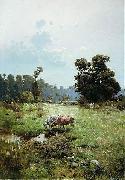 |
Serhii Vasylkivsky
|
|
(October 19, 1854, Izium e October 7, 1917, Kharkiv) was one of the most prolific Ukrainian artists of the pre-revolutionary period and an expert on Ukrainian ornamentation and folk art.
Vasylkivsky grew up in an environment conducive to his development as an artist. He was born and spent his childhood in the picturesque surroundings of Izium, a city in the historical region of Sloboda Ukraine, and today's Kharkiv Oblast. The future painter had a chumak grandfather whose roots reached cossack ancestral lines. Vasylkivsky's father was a writer and taught his son the aesthetics of proper calligraphy. His mother, through her folk songs set the foundation which provided the inspiration for Vasylkivsky's art later in life.
When he was seven years old, his parents moved to Kharkiv, which at the time was a significant cultural center of Sloboda Ukraine. Vasylkivsky's first art lessons were given at the Kharkiv gymnasium by Dmytro Bezperchy, a student of Karl Briullov. During the years of his study, Vasylkivsky was able to use the extensive book collection of his relative and poet, V. Alexandrov. Among these were the works by Ivan Kotlyarevsky, Taras Shevchenko, and Nikolai Gogol, which made a strong impression on the young artist. After five years of education at the gymnasium and at the demand of his father, Vasylkivsky began studies at the Kharkiv Veterinary School. This lasted until 1873, when Vasylkivsky left veterinary studies due to his parents inability to pay for tuition. For a while, he worked as a civil servant in Kharkiv.
|
|
|
|
 |
Simon de Vos
|
|
Simon de Vos (Antwerp, 20 October 1603-15 October 1676, Antwerp) was a Flemish Baroque painter of genre and cabinet pictures.
De Vos studied with Cornelis de Vos (1603-76), to whom he is not related, from 1615 until 1620. In 1620 he joined Antwerp's guild of St. Luke, and then he probably travelled to Rome where he came under the influence of the "low-life" genre paintings of the Bentvueghels and the bambocciate. A Caravaggesque influence, by way of the German painter Johann Liss active in Italy during the 1620s is discernible in De Vos's paintings from this time on. In contrast to the earlier "low-life" paintings, works from the late 1620s until around 1640, which were made after returning to Antwerp, are mostly small "merry company" and courtly genre scenes reminiscent of contemporary Dutch painters Dirck Hals and Pieter Codde. After 1640, De Vos turned away from genre scenes altogether and painted mostly small cabinet paintings of history subjects, influenced stylistically at first by Peter Paul Rubens and then increasingly by Anthony van Dyck. Examples include The Beheading of St. Paul (1648) in the Royal Museum of Fine Arts, Antwerp.
He married Catharina van Utrecht, the sister of Adriaen van Utrecht, in 1628. |
|
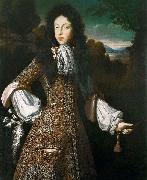 |
Simon Pietersz Verelst
|
|
(1644, The Hague - 1710, London), was a Dutch Golden Age painter.
According to the RKD he was the son of Pieter Harmensz Verelst and became a pupil in the Confrerie Pictura at the same time as his brother Herman in 1663. In 1668 he moved to London and called himself "the God of Flowers", but is known for portraits as well as flower and fruit still life paintings. |
|
|
|
|
|
|
|
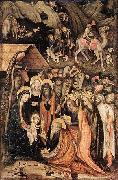 |
Stefano da Verona
|
|
Stefano da Verona. Dating to 1434, it is currently housed in the Pinacoteca di Brera of Milan, northern Italy.
|
|
|
|
|
|
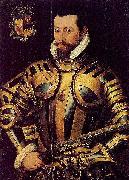 |
Steven van der Meulen
|
|
(b. eAntwerp - d. London, e1563-64) was a Dutch artist active c. 1543-1564. He gained prominence in England in the first decade of the reign of Elizabeth I as one of many Flemish artists active at the Tudor court. He is best known for the "Barrington Park" portrait type of Elizabeth I and for three-quarter length portraits of members of the English court in the first half of the 1560s. A recently discovered will indicates that he died in London between October 1563 and January 1564.
|
|
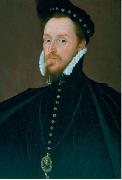 |
Steven van Herwijck
|
|
(Utrecht c. 1530-London 1565/67), was a Netherlandish sculptor and gem engraver famous for his portrait medallions and medals. It has recently been suggested that he is the "famous paynter Steven" mentioned in an inventory of 1590, who has traditionally been identified as Steven van der Meulen.
Van Herwijck worked in Italy in 1557 and returned to Utrecht in 1558, when he was made a Master of the artists' Guild of St. Luke. His earliest surviving medals, of George van Egmond, Bishop of Utrecht, and Engelken Tols, date from this year. In 1559 he relocated to Antwerp. Nine medals survive of his work there, including a portrait of Jacobus Fabius. Fleeing religious persecution, he went to Poland in 1561 where he made medallions of King Sigismund II and other members of the Polish royal family. |
|
|
|
|
|
|
|
|
|
|
|
|
|
 |
Theodoros Vryzakis
|
|
Thebes 19 October 1814 - Munich 6 December 1878) was a major Greek painter of the 19th century.
Vryzakis's father died in the Greek War of Independence. He is the first Greek painter who studied in Munich and the main representative of the type of historical painting that was popular in Greece in the 18th century.
He is considered the first painter of modern Greece, a recorder of the Greek War of Independence, which he viewed in a romantic and nostalgic way. His paintings' characters are pompous, theatrical and detached figures. His interest in the traditional costumes and the decoration and the absence of any individual facial expression is according to art critics the result of the eye of a "foreign" artist, who looks for the conventional element in another land. The monumental size of his pictures, the ceremonial and theatrical compositions, and the meticulous style of academic idealistic romanticism make his style unique for among Greek Artists. Today, many of his works are exhibited at the National Gallery of Athens and the Benaki Museum in Athens.
|
|
|







